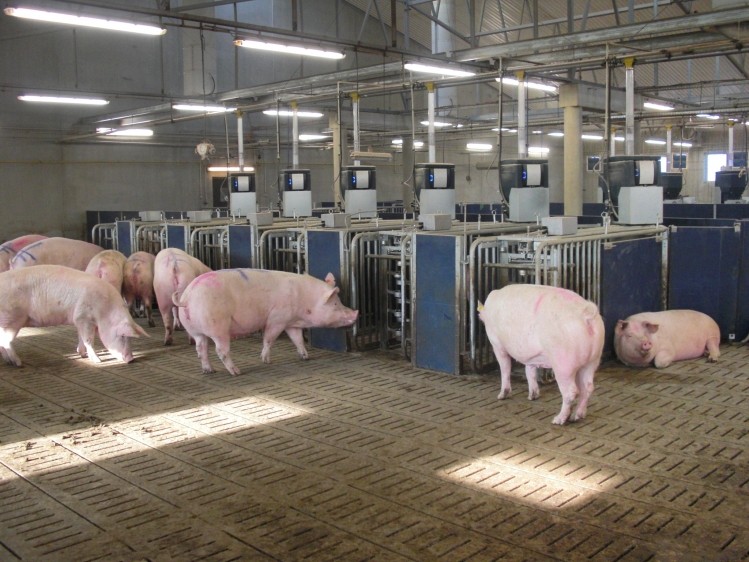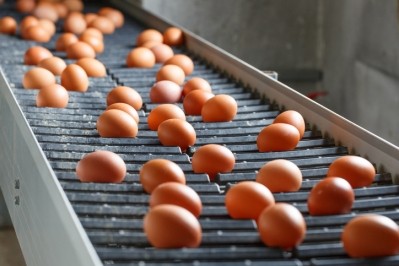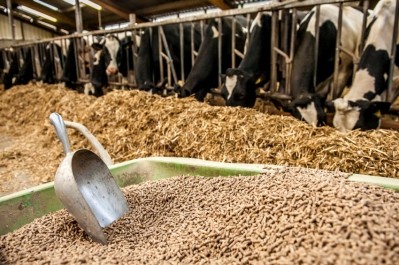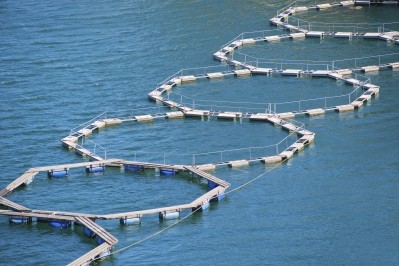New trace element line can bring 'direct and indirect' benefits to livestock producers, says BASF

Glycinates are used as feed additives in feed for livestock and aquaculture species as an effective way of delivering trace elements to the animal to boost performance, vitality and productivity.
“With this new line, we have attained a high degree of complexation for a glycinate while having a constant content of the trace element, which really enhances their bioefficacy.
During the production process there is complex formation of trace elements with the amino acid glycine.
In the case of iron, we have achieved more than 90% complexation. For copper, manganese and zinc, we have managed 95%,” Chris Rieker, who heads up BASF’s global animal nutrition business, told FeedNavigator.com.
Environmental gain
Today, in addition to the animal health perspective, trace mineral nutrition must be environment friendly.
Rieker said as the glycinate form is highly bioavailable, the use of this type of trace element in feed can also help to reduce metal emissions in manure.
Previously, trace minerals were added to animals' diets in the form of inorganic salts like sulfates and oxides. But delivery in this manner was reported to be inefficient in terms of financial and environmental costs, as only a limited percentage of the metals were absorbed by the animal, and a significant quantity ended up in the manure.
With glycinates, potentially smaller quantities are needed to supply the animals’ net needs, said the German chemical giant.
And the environment benefits from less excreted trace elements, continued the company, as glycinates have less potential to build complexes with phytate so a higher absorption rate by gut mucosa and even a higher efficiency from supplemented phytase can be expected.
Glycinate benefits for pigs
Rieker said that trials have indicated that glycinates support pig digestion, in particular:
“In fattening pigs, the effects of glycinates versus proteinates on animal performance were studied. The pigs received a standard diet during the fattening period (30–105 kg b.w.).
The results show a higher body weight gain and better feed conversion ratio when glycinates were used (Source: Männer et al. 2008, Trace elements in animal production systems, Wageningen Academic Publishers).”
BASF said the efficacy of glycinates as compared to other forms of trace elements in supporting piglet digesting was also tested (Source: Männer et al. 2008) with animals fed 53% barley (heat treated), 37.4% skim milk powder, and 3% corn starch.
Depletion took place on days 24–37 followed by repletion on days 37–44 and the results demonstrate highest apparent digestibility for glycinates, said the German group.
Challenges around setting requirements for trace minerals
Meanwhile, writing in the journal International Scholarly Research Notices (ISRN), Spanish researcher, Marta Lopez-Alonso, notes it is difficult to justify the term ‘requirements’ for trace minerals in the same way as it is for energy, protein, or amino acids.
“Requirements for minerals are hard to establish and most estimates are based on the minimum level required to overcome a deficiency symptom and not necessarily to promote productivity.
Many authorities, for example INRA in France, ACR in the UK, or FEDNA in Spain, have recommended mineral requirements to ensure that the production of native livestock is not impaired by dietary mineral imbalances; however, agreement is rare. The recommendations for livestock in the USA are perhaps more up to date.”
The Spanish animal scientist said mineral recommendations should include a safety margin to take account of the presence of antagonists.
“For example, in ruminants Cu (copper) uptake is inhibited particularly by Mo (molybdenum) but also by S (Selenium) and to a lesser extent by Fe (iron) and high levels of Ca (calcium) in the feed inhibit the uptake of Zn (zinc).
Moreover, when determining mineral recommendations, consideration must be given to the quantity and type of raw ingredients and their inherent mineral content, the processing of the diet, the storage and environmental conditions, and the inclusion and content of other minerals.”













